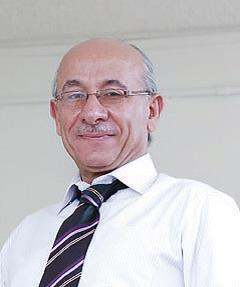Day 1 :
Keynote Forum
Jean-Francois Hocquette
INRA(French National Institute for Agricultural Research), France
Keynote: What type of meat will we eat in the future: Still conventional meat from livestock, in vitro meat or meat analogues?
Time : 10:00-10:40

Biography:
Jean-Francois Hocquette is a Scientist at the INRA(French National Institute for Agricultural Research), France. His research interest mainly concerns with muscle biology as relevant to muscle growth and beef eating quality. His scientific activity resulted in 250 papers, 2 patents, over $7M in grants, Mentor to 27 scholars, Adjunctship (800 students) and 60 lectures worldwide. He was the Head of the Herbivore Research Unit and currently works for the High Council for Evaluation of Research & Higher Education. Besides, he is also involved in the activities of the European Association for Animal Production and of the French Meat Academy. He was an Associate Editor of BMC Genomics, edited two EAAP books and is currently Editor-in-Chief of the French Meat R&D Journal
Abstract:
The global population is estimated to reach 9 billion by the year 2050 and the meat industry would need to increase its production by approximately 50-73% based on current consumption trends. In response, there are several different options that have the potential to satisfy demand and increase production. One of these options is the production of cultured meat, which regularly generates media interest because of the potential contribution to food production while protecting the environment and respecting animal life. Proponents of artificial meat have been successful in engaging the interest of public media with an effective communication strategy. Cell culture has been performed successfully in research laboratories, however, there are significant technical difficulties limiting large-scale production including prohibitive cost and a lack of similarity of the obtained product with animal derived-meat. Other alternatives include selective breeding, animal cloning, genetic modification, agroecology systems and orientation towards bio-economy (those parts of the economy that use renewable biological resources). Furthermore, new protein sources from plants, fungi, algae or insects could also be used as a substitute for meat proteins. In the future, it is likely that meat substitutes will increase market share through competition with low-grade cuts of meat, cheap meat, ground meat and processed meat. To meet growing demands for protein and in the face of growing competition from other protein sources, the conventional meat industry must adopt new farming systems. The traditional more extensive livestock system (pasture-based beef and lamb) is one option likely to satisfy consumers’ expectations for natural products. Grazing systems are also the best to convert low-grade cellulose from grass into high quality organoleptic and healthy products. Ultimately, consumer acceptance of artificial meat will depend on moral or ethical concerns about the technology, as well as the usual food product concerns such as price, quality and providence.
Keynote Forum
Jerry Johnson
Colorado State University, USA
Keynote: Using decision trees for variety selection
Time : 11:00-11:40

Biography:
Dr. Johnson is Professor and Extension Specialist in the Department of Soil and Crop Sciences at Colorado State University in Fort Collins, Colorado USA. He has conducted food crop variety trials in Francophone West Africa, the state of Washington USA, and in Colorado USA from 1976 to present. Sally Jones is the Research Agronomist for the Crops Testing program in Colorado. Sorghum research is her principal area of interest although she collaborates for testing multiple crop species, uses the most appropriate model to analyze each variety trial and co-publishes six crop reports and multiple popular publications of trial results
Abstract:
Keynote Forum
Elie K. Barbour
King Abdulaziz University, KSA
Keynote: Global research ensuing in an invention for comprehensive control of coccidiosis in poultry
Time : 11:40-12:20

Biography:
Abstract:
- Sustainable Agriculture | Agricultural Biotechnology & Agro-forestry | Plant Science & Weed Science | Plant Biotechnology | Food Value Chains | Crop Protection and Awareness
Session Introduction
Roberto Pasqualino
Anglia Ruskin University, UK
Title: Complexity in the global agricultural system – Threats to human development and opportunities for science
Biography:
Abstract:
Petras Lazauskas
Aleksandras Stulginskis University, Lithuania
Title: The law of the field crop performance (agrophytocenosis) productivity: The key to the future of agriculture
Biography:
Abstract:
Alvaro Sotomayor
Forest Research Institute, Chile
Title: Development and results of agroforestry in Chile: A way to connect forest and agriculture
Biography:
Abstract:
Sangwani Gondwe Makoko
African Institute of Corporate Citizenship, Malawi
Title: From farm to table: Rice quantitative value chain in Malawi
Biography:
Abstract:
Thuzar Linn
Ghent University, Belgium
Title: Mapping and analyzing value chain of rice crop in Ayeyarwady region
Biography:
Abstract:
Mxolisi Arnold Stemele
Fort Hare University, South Africa
Title: Farmer’s decision making toolbox for Plutella xylostella (L.) (Lepidoptera: Plutellidae) management on fresh market cabbage
Biography:
Abstract:
Biography:
Abstract:
- Rice & Wheat Research | Plant Biotechnology | Plant Pathology | Entomology
Session Introduction
S Leelavathi
International Centre for Genetic Engineering and Biotechnology, India
Title: Efficient transformation of submergence tolerant deep-water rice of North-East India and fast recovery of transgenic plants
Biography:
Abstract:
Yildiz Aydin
1Marmara University, Turkey
Title: Strategies for haploid plant production: Experiences from sunflower
Biography:
Abstract:
Ahu Altinkut Uncuoglu
Marmara University, Turkey
Title: The use of DNA markers in plant breeding for disease resistance: From PCR-based approaches to allele specific markers
Biography:
Abstract:
Pooran Chand
Sardar Vallabhbhai Patel University of Agriculture & Technology, India
Title: Relationship between physiological traits and grain yield in wheat (Triticum aestivum L.) under heat-stress environments
Biography:
Abstract:
- Organic Farming | Rice & Wheat Research | Agriculture Engineering & Its Applications | Agricultural Biotechnology & Agro-forestry | Plant Diversity, Conservation and Use | Post-Harvest Technology | Plant Biotechnology | Food and Nutrients
Session Introduction
Prae-ravee K-hasuwan
Ministry of Agriculture and Cooperatives, Thailand
Title: Development of organic farming using participatory guarantee systems: A case study in land reform area, Ayutthaya province, central Thailand
Biography:
Abstract:
Statement of the Problem: Farmers who are members of a Lat Bua Luang Community Rice Center (LBLCRC) in land reform area, Ayutthaya province, central Thailand, used conventional farming techniques and did not have enough profit to feed their family members. They then switched to organic rice cultivation to reduce their production costs and initiated organic vegetable production to boost their income using Participatory Guarantee Systems (PGS). PGS can improve local organic farming practices through the sharing of knowledge and experiences. PGS certification also has less administration and lower costs than third party certification. However, PGS is not prevalent in Thailand because most producers and consumers lack understanding of its processes and advantages. This study thus aims to examine the outcome of organic group processing and the interaction between the LBLCRC-member farmers and other stakeholders from participating in PGS.
Methodology & Theoretical Orientation: Collaborative action research using a concept of empowerment theory was conducted to promote the organic group processing and the ability to control selling prices. The face-to-face interviews and focus group discussions were also taken place during data collection procedures.
Findings: The participation in PGS can improve organic group process skills of the LBLCRC-member farmers and strengthen them to have better access to domestic markets rather than limiting their organic products into a local niche market.
Conclusion & Significance: PGS may be a promising alternative for smallholder farmers to develop organic group processing and to increase market accessibility. Further studies in the way to scale up other land reform areas under organic farming using PGS should be emphasized
Pooran Chand
Sardar Vallabhbhai Patel University of Agriculture & Technology, India
Title: Molecular characterization of rice (Oryza sativa L.) germplasm using SSR marker
Biography:
Abstract:
Molecular marker technologies can assist conventional breeding efforts and are valuable tools for analysis of genetics relatednessand the identifications and selection of desirable genotypes for crossing as well as for germplasm conservation in gene banks. The objectives of the present investigation were to evaluate genetic divergence, molecular characterization of 30 rice genotypes using twenty SSR markers and to evaluate the efficiency of SSR markers. Among the used 20 primers, only 15 primers amplified well and revealed polymorphic bands, whereas, remaining 5 primers showed no reaction in PCR amplification. The allele length for these 15 primers varied from 100 to 500 bp. Total of 20 alleles were detected in 30 rice genotypes and number of alleles per locus ranged from 1 to 3 with an average of 1.93 per locus. The highest number of alleles (3.0) was detected in the locus RM1, RM2-, RM26 and the lowest number of alleles (1.0) was detected from RM22, RM 138, RM182 and RM 189. The PIC (Polymorphism Information Content) values for different SSR loci across the 30 rice genotypes ranged from 0.066 (RM138 and RM 182) to 0.9 (RM31) with an average of 0.605. The PIC values indicate that RM31 might be the best marker for diversity analysis. Resolving power of the microsatellite markers used ranging from 1.6332 (RM20) to 4.3664 (RM26) with an average of 2.4686. Jaccard’s similarity coefficient revealed that Punjab Basmati 3 and Vallabh Basmati 24 were ascertained to be the genetically divergent from the other genotypes. The similarity coefficient values indicated, a wide genetic base of 30 genotypes used in the experiment. The resolving power and PIC value of primers shows that they are highly polymorphic and informative. The result derived from the analysis of genetic diversity at DNA level could be used for designing effective breeding programs aiming to broaden the genetic basis of commercially grown varieties.
